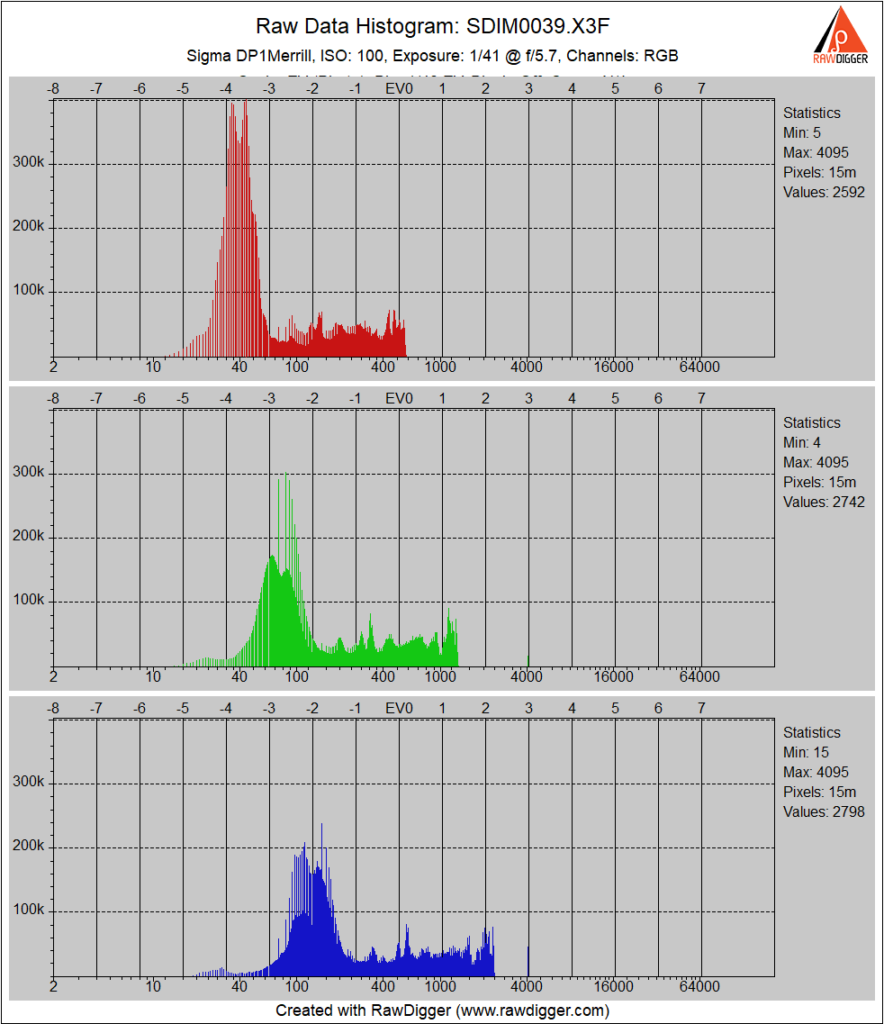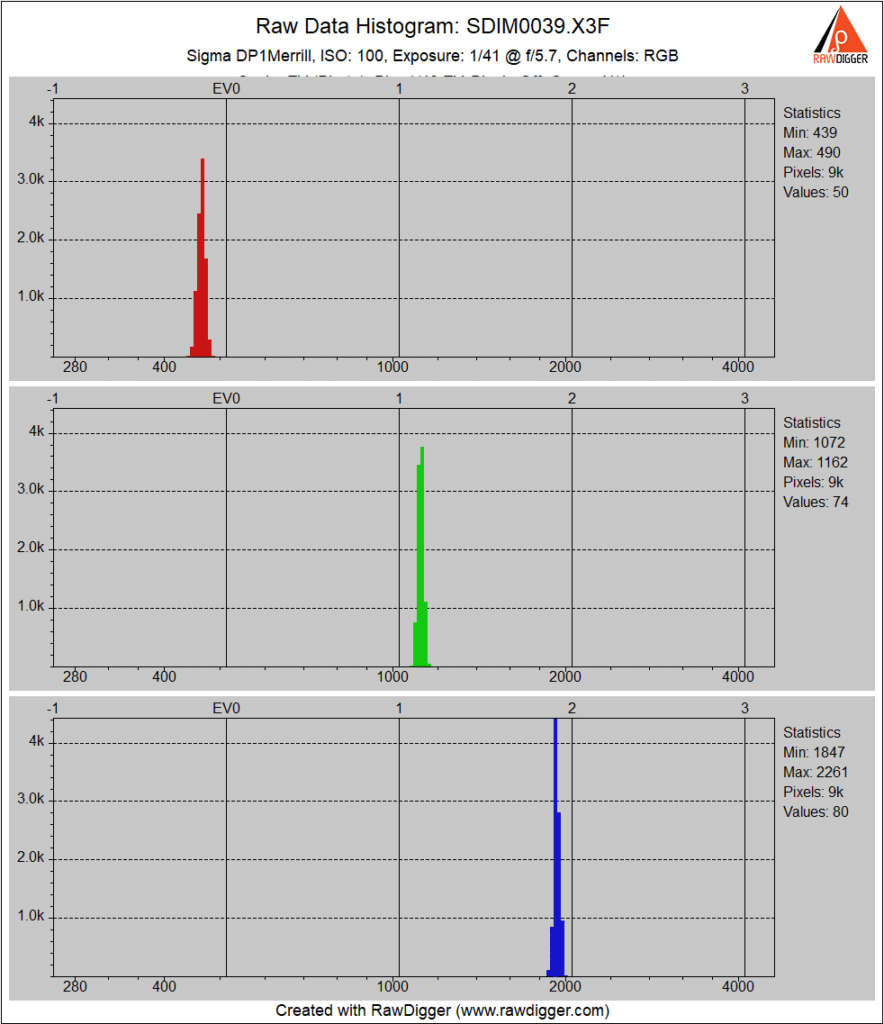While I was looking at the Sigma DP1 Merrill Studio Scene raw file, I decided to look at some raw histograms.
This is the histogram of the whole image:
It’s a 12-bit analog to digital converter (ADC). The putative blue channel (what I call the white channel in a Foveon sensor) has about 50,000 pixels clipped at 4000. The putative green channel, which I call the yellow channel, since it’s sensitive to green and red light, is about a stop down from the white channel. The red channel is a stop down from that.
Here’s a raw histogram of a white patch:
You can see what we’re up against here. The white channel (in blue) is a bit more than a stop down from full scale. The yellow channel (in green) is a bit less than a stop down from that. The red channel is more than three stops down from full scale. This is a recipe for noisiness. The red channel has an effective precision here of less than nine bits. But it’s not just the red channel that will be noisy. In order to get an sRGB or Adobe RGB representation, we will have to subtract a portion of the red and yellow channel values from the blue channel ones, causing the red and yellow raw channel noise to affect the sRGB blue channel. Similarly, in order to get an sRGB or Adobe RGB representation, we will have to subtract a portion of the red channel values from the yellow channel ones, causing the red raw channel noise to affect the sRGB green channel.
One of the things that Sigma claims is higher quantum efficiency than Bayer-CFA sensors. It appears that’s only true for the white channel.


Jakob Bogenberger says
I had a DP3 and I liked the images a lot but not so much at high contrast or low light and your article explains why. I always thought that layers above the red layer just absorb too much light for low light performance and you proved it. I wonder how Sigma wants to develop a new version of a Foveon sensor without that issue but not interpolating color from adjacent pixels is an attractive concept.
On issue I had with that camera was the terrible quality of the LCD screen but that applies still now to all cameras if one compares it with smartphone screens.
Reiner Franke says
Jim, to my understanding the difference of the ADC readout from the different layers is because of the different sensitivity of the sensor layers in terms of voltage. This because in comparison to bayer sensors where the silicon is idential, the Foveon have different kind of diodes for each layer.
The two lower layers are buried and connected trough vertical silicon plugs to the read and reset transistors. The lowest layer have the worst ratio of depletion area to adsorption volume for the photo generated minority carriers. So the effective voltage buildup as carriers are generated is lower. The structure is more complicated than the simple sketch of three layers as the two plugs must be of the same donation type, connect to the top and do not touch each other. Up to now i did not saw any realistic layout of the Foveon pixel architecture.
The top layer have an unpinned classic diode for the SD9/10, later Foveons use all pinned diodes for the top layer. The shot noise is not very different in each layer but the lower detection voltage of the lower layers mean that the transistor read noise is relative to the lower layers higher.
Comparing the SD14 to SD15 is interessting as both using the same sensor but the SD15 is using differrent amplifier gains for each layer. It does not solve the read noise to voltage sensitivity relation but the ADC have less quantization noise contribution. And the RAW histogram looks less funny.
On the other side is the SD14 less prone to saturation in the lower layer and the SD14 is my prefered cam for artificial light.
BTW technical the issue with the incompatibility of the Foveon with typical process offerings is that the silicon plugs are of N+ as typical to reach a buried N/N+ but also a P+ for an isolated Pwell which is unseen in all processes . Second point is that to optimum spectral layer response the layer thickness is different than for electrical device performance. Then the third issue is that the vertical plugs are diffusion isolated where modern process use trench isolation. This put limits on the pixel size as the plugs typical get metal covered.
Another issue with Foveon is that depending on the voltage built up in the different layers the interlayer depletion capacitance change. This means that the photoresponse is not only nonlinear in terms of voltage but also affected by the other layers. So i guess that that the Sigma Photo Pro also contain linearization algorithms. One class would 3D model based newton-raphson. So iterative, it would explain the slow performance.
Hope that give you a little insight.